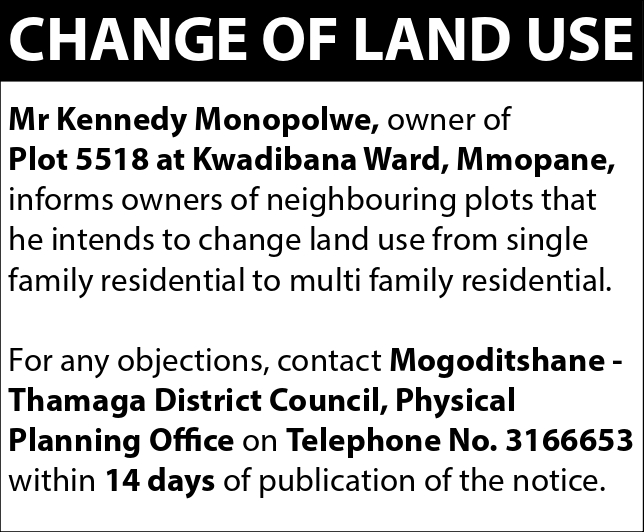Caught in a merciless trap of high rentals, rising food prices and household debt that threatens to shoot through the roof, impoverished Batswana can take a breather after the Bank of Botswana (BoB) cut the bank rate by 25 basis points, but commercial banks will suffer from reduced interest income. KEABETSWE NEWEL reports.
At a meeting on August 29, 2019, the Monetary Policy Committee (MPC) of the Bank of Botswana decided to reduce the Bank Rate by 25 basis points from 5 percent to 4.75 percent. The reduction means there will also be a 25 basis point reduction in interest rates, much to the chagrin of lenders.
For three years now, almost 40 percent of *Boitumelo Mothibi’s monthly earnings were deducted by a local commercial bank in repayment of a personal loan. The 37 year old woman is a civil servant. She used the money to purchase a cheap motor vehicle to chauffeur herself from Molepolole to Government Enclave in Gaborone, her place of employment. Her decision was driven by unreliability of public transport.
It was nice to have her own car at first, but she now regrets having bought it mainly because life soon became more expensive by the day. She has sold the car because she could not afford to maintain it, let alone keep up with her loan repayments. Looking after her 81-year old mother, two unemployed siblings and her two daughters proved a struggle. The cost of living, especially food prices, continued to escalate. From this inescapable rut, Mothibi watches the bank withdraw thousands of pula, the equivalent of 40 percent of her monthly remuneration, without fail. It cannot be any other way because the bank had loaned her money and she has to pay it back. The money would go a long way to make her life easier.
However, she is a bit oblivious of how banks operate. She pays even less attention to the Bank of Botswana (BoB) and the bank rate. What she has noticed is that since last year, there have been several reductions in her monthly repayments to her bank. She is not the only one who contends with a reduction in her monthly payment and is oblivious of where it comes from. But probably also unbeknownst to her, she is a part of the highly-indebted household sector in Botswana that will benefit from Moses Pelaelo’s decision to cut the bank rate. Collectively, Batswana owe commercial banks in excess of a staggering P25 billion.
Batswana’s collective debt to banks is equivalent to almost half of their country’s GDP. At Motswedi Securities, head researcher Garry Juma believes that a reduction in the bank rate will benefit this lot because of reduced interest on monthly installments. Before Pelaelo was appointed Governor, his predecessor Linah Mohohlo reduced the bank rate from 6 percent in 2015 to 5 percent. Pelaelo has effected another reduction. The reductions meant further decreases in interest rates. Interest rates in Botswana averaged 10.51 percent from 2006 until 2016, reaching an all-time high of 15.50 percent in June of 2008 and a record low of 5.50 percent in August of 2016.
Juma feels that the cut in the bank rate was always expected, given the slow growth of the domestic economy. “Food prices have been stubbornly going up, pushed by the devastating El Nino induced drought which has been described as the worst in 35 years by the United Nations Office for the Coordination of Humanitarian Affairs,” he says, adding that such challenges have made life costly for people like Mothibi and Botswana’s household sector in general. Because of the tough economic climate, repaying banks has been a burden, but with low interest rates occasioned by the cut in the bank rate, bank customers can afford a smile.
Past due loans (that is, loans tainted by arrears) increased by 11.7 percent to P4 billion in 2017 (December 2016: P3.6 billion). On the other hand, non-performing loans (NPLs) (impaired loans) increased by 13.6 percent to P2.9 billion (December 2016: P2.5 billion). The household (predominantly unsecured loans) and private business sectors accounted for 52 percent and 48 percent of total NPLs in 2017 respectively.
Juma says funding will be cheaper, especially for the business sector, a development that should accelerate economic activity. But while banks will fund businesses and households with lower interest rates, it means less money for them. Juma says Net Interest Income (NII), which is the rate charged on loans, will reduce. NII consequently adds to the banking sector’s profitability. The higher it is, the more the income.
The banking sector’s total assets increased by 3.5 percent (5.3 percent in 2016) from P80.6 billion in December 2016 to P83.5 billion in 2017. Gross loans and advances grew by 5.6 percent to P54.2 billion in December 2017.
Faced with the low interest rate environment, Juma says the banks are forced to become more innovative to make money through non-interest income such as fees charged on products like cellphone banking. He sees banks introducing more innovative products to generate non-interest income.
Non-interest income grew by 5.3 percent from P2.2 billion to P2.3 billion in December 2015 due to fees/charges levied on new banking services and products, as well as foreign exchange fees and commissions. Consequently, the share of non-interest income to total income increased to 42.7 percent in December 2015. It should go even higher as a pressure from reduced interest income grows.




